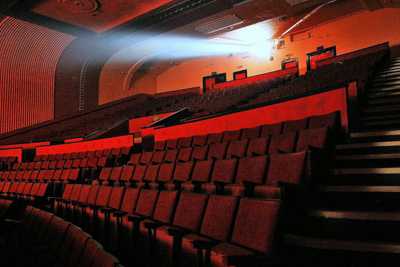Curtains Up! Color and Its Use in Cinematography
Color has been a part of movie making since the film industry was in its infancy. In the early days of moving pictures, before the invention of color film, early filmmakers would actually color each film cell by hand to add additional elements to their productions. Why? Because even then, they understood the power that color can have on visual storytelling in film.
Any brief article on color theory will tell you that certain colors convey certain moods and communicate additional information about a situation or environment, but in filmmaking the creativity plays a major role in how colors are put to work to assist in telling the story or conveying that mood. Instead of red being only associated with anger, it may instead be used to express joy. Instead of green being used to communicate peace, a more saturated tone might be used to show monotony or gritty realism.
On top of this, filmmakers almost never stick to one singular color. Usually, they use groupings of colors in particular ways to create a color palette used throughout their movies. Some use monochromatic color groupings where different hues and saturations of the same color are used to create cohesive color throughout a film or scene. Others may use complementary colors, where colors are paired from opposite ends of the color wheel and be used to create either a sense of balance or a sense of discord within scenes. Still, others may use Analogous (where related colors close to each other on the color wheel are used) or Triadic (all the colors are equal distance away on the color wheel) groups of colors to communicate the overall tone of the film.
Filmmakers will also associate a specific color with a character, or surround a character with different colors as the character transitions or grows throughout the story. In many films, the main character will be dressed in a particular color that captures the audience’s eye, by using that color over and over again with what the actor is wearing, or the environment the character is placed in. By doing this audiences are given subtle clues to what is happening in the character’s life, or in a particular scene by the colors being used. For example, if a bright, happy character dressed in yellow is suddenly thrown into a dark black scene, we as an audience might assume something bad is about to happen.
In a more complex way, color is also used to show character growth by having the character associated with certain colors at the beginning of the film and then slowly moving them through a series of colors at each developmental point in the movie, until they are finished growing and expanding. In the movie, The Last Emperor, the main character starts off surrounded by reds because he associates everything with this color, due to its traditional and cultural significance. As he grows, the colors shift to yellow. Eventually, once the movie ends, he has matured and left many of his cultural traditions behind, and then his environment becomes a darker green.
It’s safe to say that color is one of a film’s most essential storytelling elements and how it’s used effects how we experience both the characters and the entire message of the film itself.











